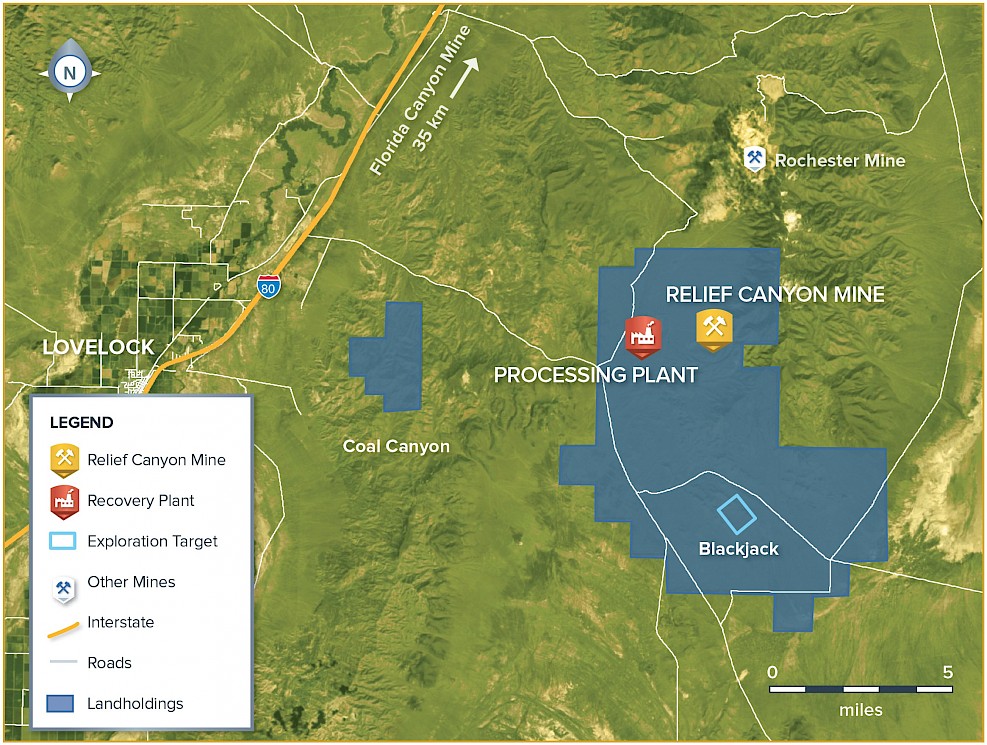Operations
Relief Canyon (C&M)

Mining in Nevada
Nevada has the second largest gold reserves in the world. It has 23 major gold mines, produces five million ounces of gold annually, and has produced more than 152 million gold ounces since 1835. Nevada has a stable tax regime, robust legal framework, streamlined permitting process, nearby infrastructure and unparalleled access to qualified labor. It is ranked by the Fraser Institute as the fourth most mining friendly jurisdiction in the world.
Relief Canyon Mine and Processing Facility
The Relief Canyon Mine is located in Pershing County, Nevada. The project is currently on care and maintenance.
Americas Gold and Silver's landholdings cover approximately 25,000 acres that include the Relief Canyon Mine asset and lands surrounding the mine in all directions.
Relief Canyon is situated at the southern edge of the Pershing Gold and Silver trend along the Humboldt Range. It is approximately 95 miles northeast of Reno, Nevada. Electricity is available on the property, and water is available from two wells located east of the processing plant. The City of Lovelock is located approximately 19 miles by road west-southwest of Relief Canyon.

